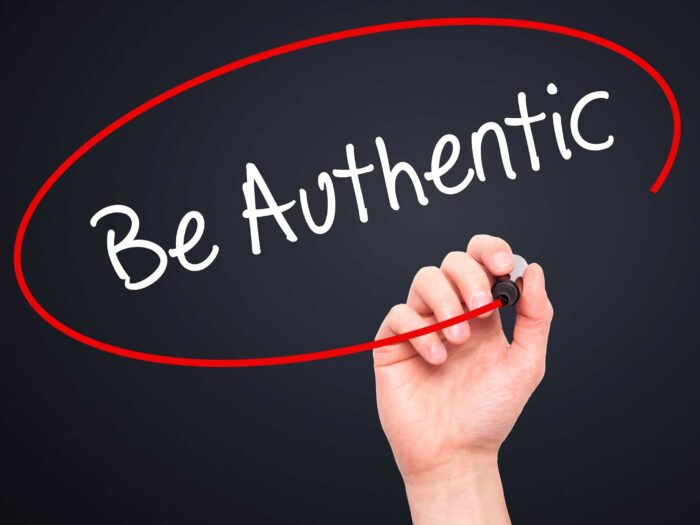
Social media platforms are not just places to share vacation photos or memes but they have become primary halls where we debate politics, find medical advice, and develop collective beliefs.
That means when content is misleading, manipulated, or outright false, the consequences ripple quickly. People no longer just scroll: they act, they share, they believe. For that reason, social media needs better content authenticity standards.
In this article, we’ll explore the urgency, the technical and policy challenges, what better standards would look like, and how platforms, creators, and users all share responsibility.
The urgency: why weak authenticity is already doing damage

When authenticity breaks down, trust disappears. Audiences quickly grow skeptical, and a brand or creator’s reputation can collapse once their content is exposed as fake or altered.
Studies show that roughly half of consumers value authenticity as the most important trait in social media content, and close to 90% consider it essential when choosing which brands to support.
Beyond reputation, there is a wider social risk. Research on millions of social media posts found that automated accounts are major drivers of misinformation, often spreading low-credibility content faster than humans.
Some platforms have started labeling AI-generated images, but progress is inconsistent.
Users also need their own tools for verification. AI checker free version, can help creators and audiences determine whether text is AI-generated, strengthening transparency across digital spaces.
As AI becomes more advanced, the line between real and synthetic content continues to blur making authenticity standards essential, not optional.
What better content authenticity standards would do (and how)
Let’s envision what improved standards could offer. Good authenticity systems should:
- Track content provenance: Who created it, with which tools, when, how many times it was edited
- Detect tampering or synthetic modifications: Show whether something has been altered or generated
- Present signals transparently to users: So viewers see when content is verified, questionable, or modified
- Be resilient and interoperable: Standards should work across platforms, formats, devices
Here’s a table comparing weak vs. strong approaches:
| Feature | Weak / current approach | Improved standard approach |
| Provenance info | Rare or absent | Embedded metadata (Content Credentials) |
| Tamper alerts | Not shown or hidden | Visible “flag” or badge if altered |
| Cross-platform consistency | Varies per platform | Shared open standard (e.g. C2PA) |
| User access | Mostly opaque | Users can inspect origin history |
| Incentives | Little reward to verify | Platforms reward verified content |
The open technical standard (C2PA) is being positioned precisely to enable these provenance metadata features. The Content Authenticity Initiative (CAI) works to promote adoption across the industry.
Adopting such standards means that when a creator produces content, metadata about creation, editing, and tool usage travels with it — unless maliciously stripped (in which case the system should signal that). Viewers should see a badge or indicator like “Verified original” or “Edited / synthetic content flagged” before diving in.
Better standards also enable automated verification systems, integrated AI detectors and human-in-the-loop systems working together to validate content at scale.
Challenges and obstacles: why we’re not there yet

Even with the vision clear, several barriers stand in the way:
- Platform incentives misaligned
Many social platforms benefit from engagement above truth. Sharp content—even if dubious—drives clicks, shares, ad revenue. - Technical complexity and interoperability
Embedding cryptographic signatures, metadata, version tracking across formats (text, audio, video) is nontrivial — and different platforms/devices handle formats differently. - Resistance to adoption
Many creators and users are unaware or unconcerned. Some platforms may delay or ignore standardized authenticity features. As of 2025, adoption of C2PA metadata remains low. - Privacy vs verification tension
Provenance data may reveal identity, location, device details. Some content creators or users may find that intrusive, especially in contexts of anonymity or privacy-sensitive topics. - False positives / adversarial attacks
Malicious actors might falsify provenance metadata or strip it. Verification systems must guard against such tampering. - Legal and regulatory gaps
Without regulation requiring authentication standards or oversight of content integrity, adoption is voluntary and piecemeal.
Despite these, a shift is underway. The ITU is mapping standards and policy for multimedia authenticity in a world of AI.
Governments and digital oversight bodies are increasingly eyeing regulation to hold platforms accountable. The legal landscape for content authenticity is also evolving.
What platforms, creators, and users each must do

A standard is only as strong as the ecosystem that supports it. Below is how each player can contribute:
Platforms
- Integrate provenance metadata frameworks (e.g. C2PA) so every upload is stamped
- Surface verification badges / indicators to users (e.g. “Original verified”)
- Penalize content lacking provenance or flagged as tampered
- Provide APIs / tools for creators to inspect authenticity
- Prioritize content that is verified, reducing reach of mis-attributed or suspicious content
Creators
- Use tools that support metadata and authenticity stamps (photo editors, video tools, content pipelines)
- Publish original, unaltered content whenever possible
- Be transparent about editing or AI usage
- Run checks (including free AI detection tools) before posting
- Disclose sponsorships, endorsements clearly (research shows only about 10 % of affiliate content discloses properly)
Users
- Develop habits of skepticism: check provenance, look for authenticity badges
- Use AI checkers to see if content appears synthetic
- Demand better authenticity from creators and platforms
- Report suspicious content
Over time, creators and platforms that invest in trustworthy content will win user loyalty. Authenticity is not just moral, it is competitive advantage in a skeptical world.
Mind the mental health angle: authenticity matters to us

It’s not just about truth and brands. There’s a human emotional side. Research shows that people who present their authentic selves on social media report greater life satisfaction and fewer mental health symptoms over time.
Conversely, when identity is tied to curated, idealized personas, stress and cognitive dissonance rise.
Moreover, when the content people consume is clearly verified (versus shady or manipulative), it reduces cognitive burden. Users don’t need to guess whether they are being deceived.
That clarity reduces anxiety and builds a healthier online environment. In short: authenticity is not just technical correctness, it’s psychological safety.
The final thoughts
To conclude, social media without rigorous content authenticity standards is a house built on sand. The acceleration of AI, the power of virality, and the fragility of trust all demand that we raise the bar.
Better provenance metadata, cross-platform standards like C2PA, transparency tools for creators and users, and regulatory support are the architecture of a healthier digital future.














